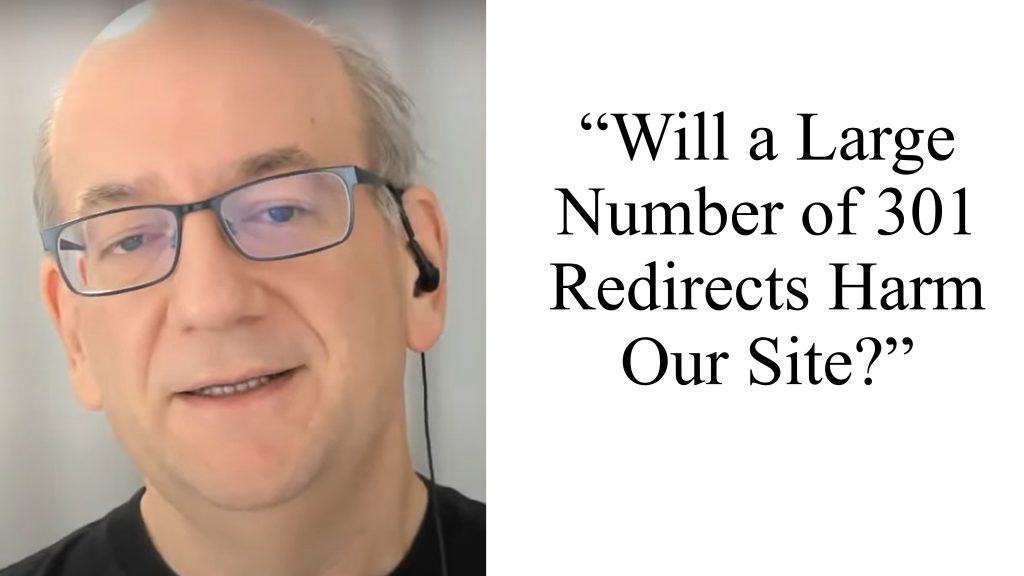
A 301 redirect is basically a way of indicating that, “The content at this page/URL has been permanently moved to this other page/URL.”
The ‘other page/URL’ would be in the code of the 301, so that if a browser or search engine went to the original URL, the 301 would redirect the visitor to the other URL.
That said, it’s not technically necessary that the content at URL A is actually moved to a new URL, but that’s a possible scenario. You can also use a 301 redirect if you own a retail site, and you have a URL for an item that has been permanently discontinued.
In that case, you can permanently redirect that page/URL to another page/URL that would serve as an appropriate replacement for the item that’s not in stock.
So, during the most recent Google English SEO office-hours (December 12th, 2021), Google’s John Mueller was asked about this.
Nearly 15 minutes in (and the video below has been queued to the appropriate time stamp), a participant explained her situation, and asked:
“We are taking down some useful pages and doing 301 redirects to them and we were wondering, ‘Will a huge amount of 301 redirects do harm to a site?’”
Now, I’d like to say that while the participant says the words ‘harm to a site,’ I don’t think she means harm in the literal sense, because I don’t see how that can happen.
I assume that, since she’s on an SEO-oriented call, she’s asking whether her site’s rankings will be affected.
John Mueller’s response was:
“No. That’s perfectly fine. If you’re making changes on your website and redirecting, that’s perfectly fine.”
The participant then asked further:
“So no matter how many pages we make redirects?”
John further confirmed his original answer:
“Yeah, yeah.”
“OK, that’s good,” said the participant.
So, having a large number of pages that have 301 redirects won’t directly hurt your site’s rankings.
So the next question is, “How Long Should You Keep 301 Redirects?” Google Responds.